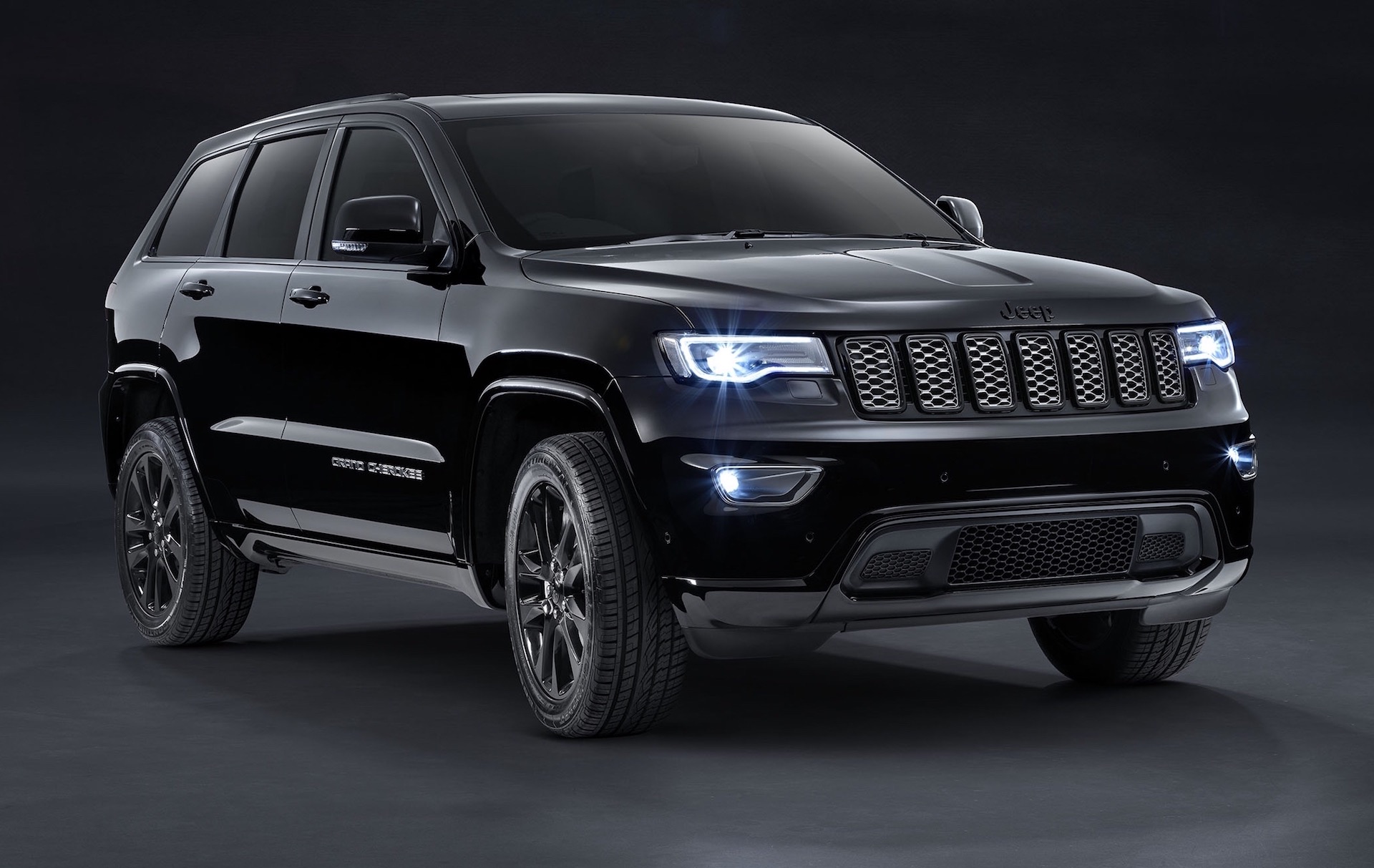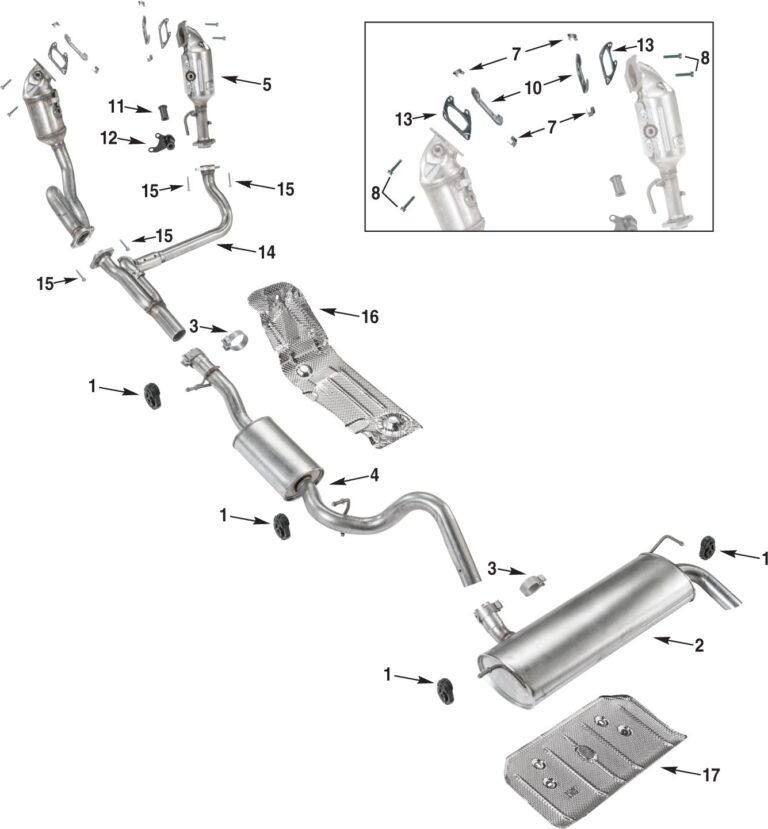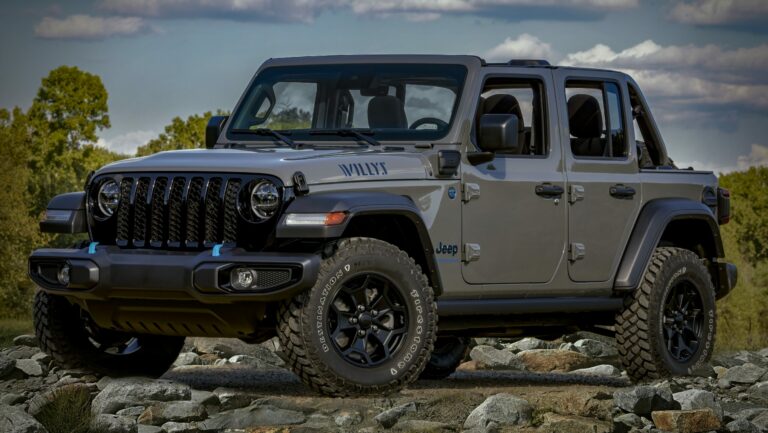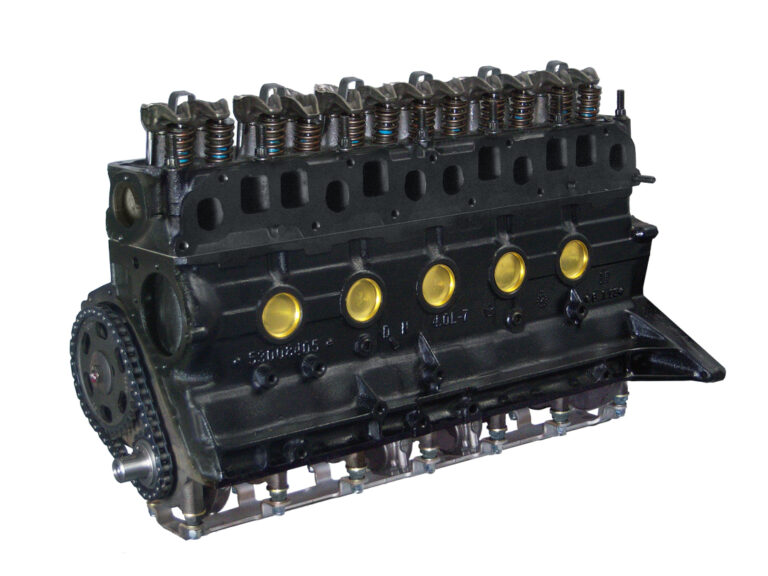Jeep Hemi Engine For Sale: Unleashing Raw Power in Your Off-Road Beast
Jeep Hemi Engine For Sale: Unleashing Raw Power in Your Off-Road Beast jeeps.truckstrend.com
The iconic Jeep, a symbol of adventure and capability, has always been synonymous with rugged reliability. Yet, for a significant segment of enthusiasts, the standard powertrain, while competent, often leaves a thirst for more. This unquenchable desire for prodigious power, earth-shattering torque, and an unmistakable V8 roar often leads them down a singular path: the pursuit of a Jeep Hemi Engine For Sale.
A Hemi engine in a Jeep isn’t just an upgrade; it’s a transformation. It’s about taking an already formidable off-road machine and injecting it with the legendary performance of Chrysler’s hemispherical-head V8s. Whether you’re aiming for unparalleled rock-crawling torque, blazing desert speeds, or simply a more exhilarating daily drive, a Hemi swap elevates your Jeep into a different league entirely. This comprehensive guide will delve into everything you need to know about acquiring and understanding a Hemi engine for your beloved Jeep, from identifying the right engine to navigating the complexities of the swap itself.
Jeep Hemi Engine For Sale: Unleashing Raw Power in Your Off-Road Beast
The Allure of the Hemi in a Jeep
Why does the Hemi hold such a mythical status among Jeep owners? The answer lies in its raw, unadulterated power delivery and robust design. Modern Hemi engines, ranging from the widely popular 5.7L to the monstrous 6.4L and even the supercharged Hellcat variants, offer a significant leap in horsepower and, crucially for a Jeep, torque, over most factory offerings.
- Unrivaled Power and Torque: A Hemi provides a dramatic increase in both horsepower and torque, translating to effortless highway merging, superior towing capacity, and incredible low-end grunt for tackling the toughest trails. Imagine scaling steep inclines with a mere whisper of the throttle, or rock crawling with pinpoint control thanks to the abundance of accessible power.
- Performance Beyond the Pavement: While often associated with muscle cars, the Hemi’s torque delivery makes it ideal for off-road applications. It allows for greater control at low speeds, reduces the need for excessive throttle input, and provides the brute force required to overcome obstacles that would stall lesser engines.
- The Soundtrack of Dominance: Let’s not forget the auditory experience. The distinctive rumble and roar of a Hemi V8 are intoxicating, transforming your Jeep into a beast that sounds as formidable as it performs.
- Common Candidates for Hemi Swaps: While theoretically possible in many models, the most common Jeeps targeted for Hemi swaps include the JK and JL Wrangler (due to aftermarket support), the WJ and WK/WK2 Grand Cherokee, and older CJ, YJ, and TJ Wranglers looking for a significant power bump.
![]()
Understanding Hemi Engine Generations and Types for Jeeps
The term "Hemi" encompasses several generations and displacements. Knowing the differences is crucial when searching for a Jeep Hemi Engine For Sale.
- 5.7L Hemi: This is arguably the most common and practical Hemi for a Jeep swap. Found in numerous Dodge Ram trucks, Challengers, Chargers, and Grand Cherokees, the 5.7L offers an excellent balance of power (typically 345-395 hp and 375-410 lb-ft torque), reliability, and relative affordability. It’s often chosen for its compatibility with existing drivetrains (with adapters) and its manageable size. Many versions feature Multi-Displacement System (MDS), which deactivates cylinders for fuel economy, though this can be disabled for performance applications.
- 6.1L Hemi (SRT-8): Found in earlier SRT-8 models (Charger, Challenger, 300C, Grand Cherokee), this engine offered higher performance (425 hp and 420 lb-ft torque) without MDS. While powerful, they are less common for swaps now due to the prevalence of the 6.4L.
- 6.4L Hemi (392 SRT): A popular choice for those seeking serious naturally aspirated power (typically 470-485 hp and 470-475 lb-ft torque). These engines are found in later SRT models and some Ram trucks. The 6.4L offers significant performance gains and is a fantastic choice for a high-performance Jeep, though it often requires more extensive drivetrain upgrades.
- Hellcat/Redeye (6.2L Supercharged): The pinnacle of Hemi power, these supercharged monsters churn out 707+ hp. Swapping a Hellcat into a Jeep is an extreme undertaking, requiring significant structural reinforcement, heavy-duty drivetrain components (axles, driveshafts, transmission), and advanced cooling solutions. While exhilarating, the cost and complexity are substantially higher.
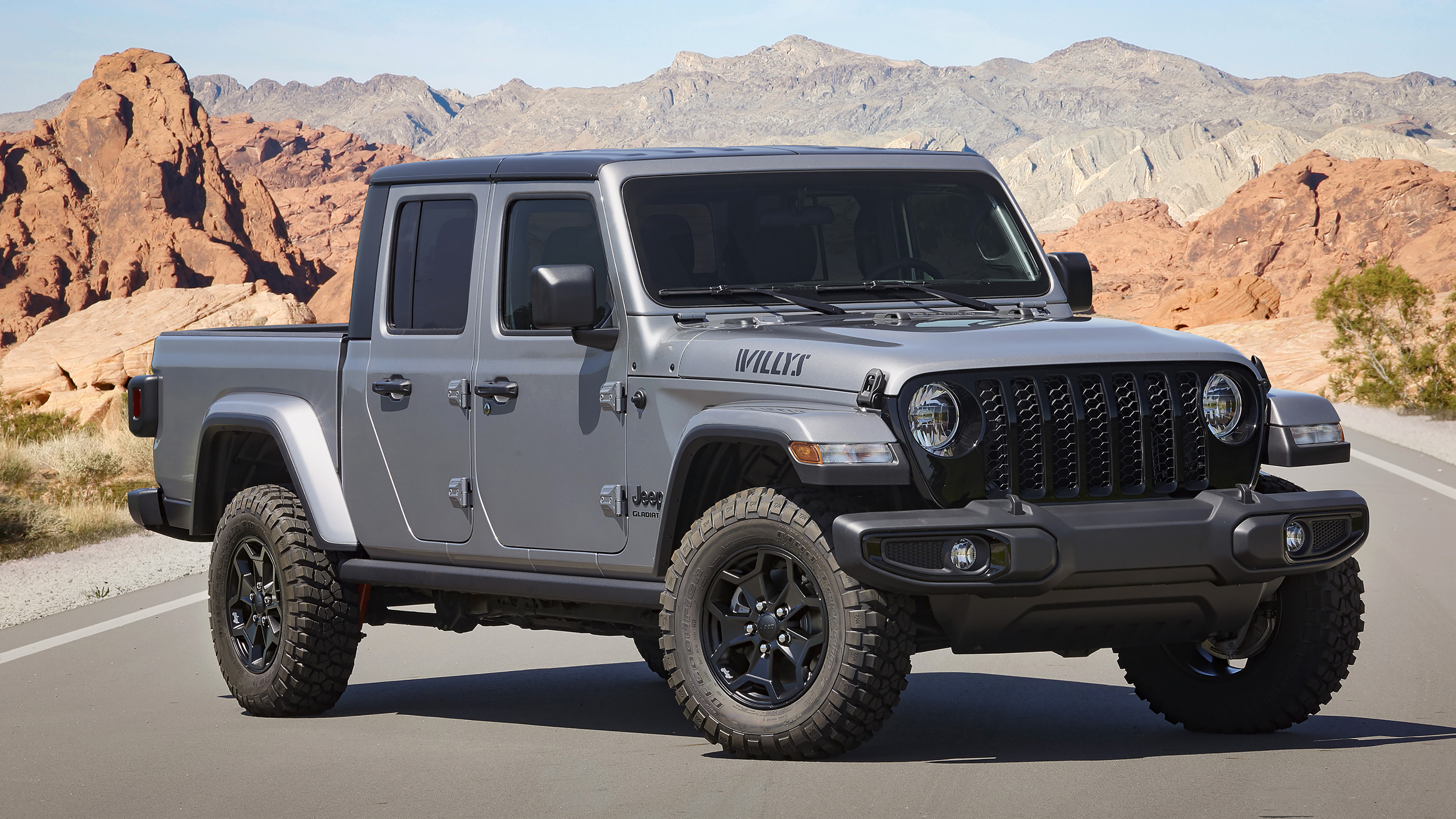

Where to Find a Jeep Hemi Engine For Sale
The hunt for your Hemi can take you to various sources, each with its own advantages and disadvantages:
- New Crate Engines:
- Source: Mopar Performance (via authorized dealers), reputable aftermarket suppliers (e.g., Summit Racing, Jegs).
- Pros: Brand new, often come with a warranty, no mileage concerns, ideal for a fresh start.
- Cons: Most expensive option.
- Used/Salvage Engines:
- Source: Automotive junkyards, salvage yards, online marketplaces (eBay, Facebook Marketplace), specialized engine brokers.
- Pros: Most affordable option, good for budget builds.
- Cons: Unknown history, potential for hidden damage, no warranty, may require significant reconditioning (e.g., new gaskets, seals, potentially a rebuild). Always try to get a compression test and inspect thoroughly.
- Remanufactured/Rebuilt Engines:
- Source: Reputable engine rebuilding companies (e.g., Jasper Engines, ATK).
- Pros: Often come with a warranty, components are inspected and replaced as needed, better reliability than used, more affordable than new.
- Cons: Still more expensive than a used pullout, quality varies by rebuilder.
- Donor Vehicles:
- Source: Buying a wrecked Dodge Ram, Challenger, Charger, or Grand Cherokee.
- Pros: You get the complete engine, transmission, ECM, wiring harness, and all accessories, which simplifies the sourcing of parts for the swap.
- Cons: Requires space to store a vehicle, often involves dismantling the donor, and the upfront cost can be higher, though it might save money in the long run by providing all necessary components.
Key Considerations Before Buying a Hemi Engine
Purchasing a Hemi is just the first step. Before you commit, consider these critical factors:
- Compatibility: Research which Hemi models are most compatible with your specific Jeep chassis. Space constraints, motor mount locations, and transmission bolt patterns are crucial.
- Engine Condition (for used/salvage):
- Mileage: Lower mileage is generally better.
- Running Condition: If possible, hear it run or get a video.
- Tests: Request compression test results, leak-down test, or even an oil analysis for deeper insight into internal health.
- Visual Inspection: Look for leaks, cracks, excessive rust, or signs of neglect/abuse.
- Included Components: A "long block" is just the engine itself. For a swap, you’ll need a "complete pullout" or "dressed" engine that includes:
- Engine Control Module (ECM/PCM)
- Wiring harness (critical for integration)
- Alternator, power steering pump, AC compressor
- Exhaust manifolds
- Intake manifold, throttle body, fuel injectors
- Budget Beyond the Engine: The cost of the engine is only a fraction of the total swap cost. Account for transmission, transfer case adapters, motor mounts, cooling system, fuel system, exhaust, wiring, programming, and potential drivetrain upgrades.
The Hemi Swap: More Than Just the Engine
A Hemi swap is a complex undertaking that goes far beyond simply dropping a new engine into the bay. It requires meticulous planning and often significant modifications to supporting systems.
- Transmission: A factory Jeep transmission (e.g., NSG370 manual, 42RLE automatic in JKs) is typically not strong enough or compatible with Hemi bolt patterns. You’ll likely need a robust Hemi-compatible automatic transmission (like the NAG1/W5A580 or the 8HP70 8-speed) or a heavy-duty manual, along with an adapter for your transfer case.
- Transfer Case: Ensure your existing transfer case can handle the increased torque, or plan for an upgrade and a compatible adapter.
- Engine Mounts: Custom or aftermarket motor mounts are essential to securely fit the Hemi into your Jeep’s frame.
- Wiring Harness & ECU: This is often the most challenging part. You’ll need a standalone wiring harness designed for the swap and the appropriate ECU (often from the donor vehicle or a reprogrammed unit) to control the engine. Professional programming is almost always required.
- Cooling System: The Hemi generates more heat. An upgraded, larger radiator and often a more powerful electric fan are mandatory to prevent overheating.
- Fuel System: A higher-volume fuel pump and possibly larger fuel lines will be needed to adequately supply the Hemi.
- Exhaust System: Custom exhaust fabrication will be necessary to route the larger Hemi headers and pipes around the Jeep’s chassis and suspension components.
- Drivetrain Upgrades: For 6.4L and especially Hellcat swaps, your axles, driveshafts, and differentials will likely need upgrading to handle the immense power and torque without catastrophic failure.
- Steering & Brakes: Often overlooked, but critical. Increased power demands better stopping power. Consider upgrading brakes and ensuring your power steering system can handle the engine’s requirements.
- Professional Installation vs. DIY: A Hemi swap is not for the faint of heart or the mechanically inexperienced. While a DIY approach can save money, it requires specialized tools, significant mechanical aptitude, and problem-solving skills. Many opt for reputable shops specializing in Hemi conversions to ensure a reliable and safe outcome.
Tips for a Successful Hemi Engine Purchase and Swap
- Research, Research, Research: Join online forums, watch build videos, and talk to people who have done the swap. Learn from their experiences.
- Set a Realistic Budget: Add 20-30% to your initial cost estimate for unexpected expenses. Hemi swaps are rarely "cheap."
- Inspect Thoroughly (for used engines): If buying used, bring a knowledgeable friend or even a mechanic to inspect the engine.
- Get Detailed Quotes: If having a shop do the work, get a comprehensive, itemized quote for all parts and labor.
- Don’t Cut Corners on Supporting Components: A cheap engine with weak supporting systems will lead to failures and more expense down the line. Invest in quality parts for your transmission, cooling, and drivetrain.
- Consider Emissions: Research your local and state emissions regulations. Some areas have strict rules regarding engine swaps, which might complicate or even prevent a Hemi conversion.
Potential Challenges and Solutions
- Cost Overruns:
- Solution: Build in a contingency fund from the start. Prioritize essential components and upgrade non-critical items later.
- Technical Difficulties/Unforeseen Issues:
- Solution: Join online communities for support. Consult with experienced Hemi swap shops. Patience and persistence are key.
- Drivetrain Weaknesses:
- Solution: Proactively upgrade axles, driveshafts, and differentials to match the Hemi’s power, especially if you plan on aggressive off-roading.
- Emissions Compliance:
- Solution: Research local laws before you buy an engine. Some states require the engine to be the same year or newer than the vehicle, and all emissions equipment must remain functional.
Jeep Hemi Engine For Sale: Example Price Table
Please note: Prices are highly variable based on condition, included components, seller, and market demand. This table provides a general range for illustrative purposes only.
| Engine Type | Condition | Typical Price Range (Engine Only) | Notes |
|---|---|---|---|
| 5.7L Hemi (Gen III) | Used Pullout | $2,000 – $4,500 | Low to moderate mileage, may need accessories. |
| Remanufactured/Rebuilt | $4,500 – $7,500 | Often comes with warranty, good value. | |
| New Crate (Mopar) | $7,000 – $10,000 | Brand new, full warranty, bare long block or dressed. | |
| 6.4L Hemi (392 SRT) | Used Pullout | $4,000 – $8,000 | Higher mileage, often from wrecked vehicles. |
| Remanufactured/Rebuilt | $8,000 – $12,000 | Reliable option for higher power. | |
| New Crate (Mopar) | $12,000 – $18,000+ | High performance, full warranty. | |
| 6.2L Hellcat Supercharged | Used Pullout | $15,000 – $25,000 | Very rare, often from totaled vehicles, includes supercharger. |
| New Crate (Mopar) | $20,000 – $30,000+ | Extreme performance, includes all accessories. |
Add to these prices the cost of a transmission, transfer case adapter, wiring harness, ECU, cooling, fuel system, motor mounts, exhaust, and labor (if professional installation), which can easily add another $8,000 – $25,000+ depending on the complexity and extent of upgrades.
Frequently Asked Questions (FAQ)
Q1: What’s the most popular Hemi for a Jeep swap?
A1: The 5.7L Hemi is generally the most popular due to its balance of power, availability, cost-effectiveness, and relative ease of integration compared to larger engines.
Q2: Can I put a Hemi in any Jeep?
A2: While technically possible with enough fabrication, some Jeeps are more suitable than others. The JK and JL Wranglers, along with WK/WK2 Grand Cherokees, have the most aftermarket support for Hemi swaps. Older CJs, YJs, and TJs also get swaps, but often require more custom work.
Q3: How much does a Hemi swap typically cost?
A3: A complete Hemi swap (engine, transmission, parts, and labor) can range from $15,000 for a basic 5.7L swap with a used engine, up to $30,000-$50,000+ for a 6.4L or Hellcat swap with all new components and professional installation.
Q4: Do I need to upgrade my transmission with a Hemi swap?
A4: Yes, almost always. The factory Jeep transmissions are typically not strong enough to handle the Hemi’s torque, nor are they usually compatible with the Hemi bolt pattern. You’ll need a robust Hemi-compatible transmission (like the NAG1 or 8HP70) and an adapter for your transfer case.
Q5: Will a Hemi swap affect my Jeep’s resale value?
A5: It can. For some buyers, a well-executed Hemi swap significantly increases value. For others, particularly those concerned about originality or emissions, it might decrease value or make it harder to sell. It largely depends on the quality of the swap and the target buyer.
Q6: Are there any legal/emissions issues with a Hemi swap?
A6: Absolutely. Emissions regulations vary widely by state/country. Some regions require the engine to be the same year or newer than the vehicle, and all original emissions equipment must be present and functional. Always check your local laws before beginning a swap.
Concluding Summary
The journey to acquiring a Jeep Hemi Engine For Sale and undertaking a swap is an ambitious one, but for many, it’s the ultimate expression of automotive passion. It’s about transforming a capable off-road vehicle into an unstoppable force, a true beast of burden and speed. From the roar of the V8 to the surge of power underfoot, a Hemi-powered Jeep delivers an unparalleled driving experience.
While the path is fraught with challenges—from sourcing the right engine to navigating complex wiring and drivetrain upgrades—the rewards are immense. By approaching the process with thorough research, a realistic budget, and perhaps the expertise of seasoned professionals, you can unlock a new realm of performance and exhilaration, proving that sometimes, more power truly is the answer. The Hemi in a Jeep isn’t just an engine; it’s a statement, a testament to the pursuit of ultimate capability.
